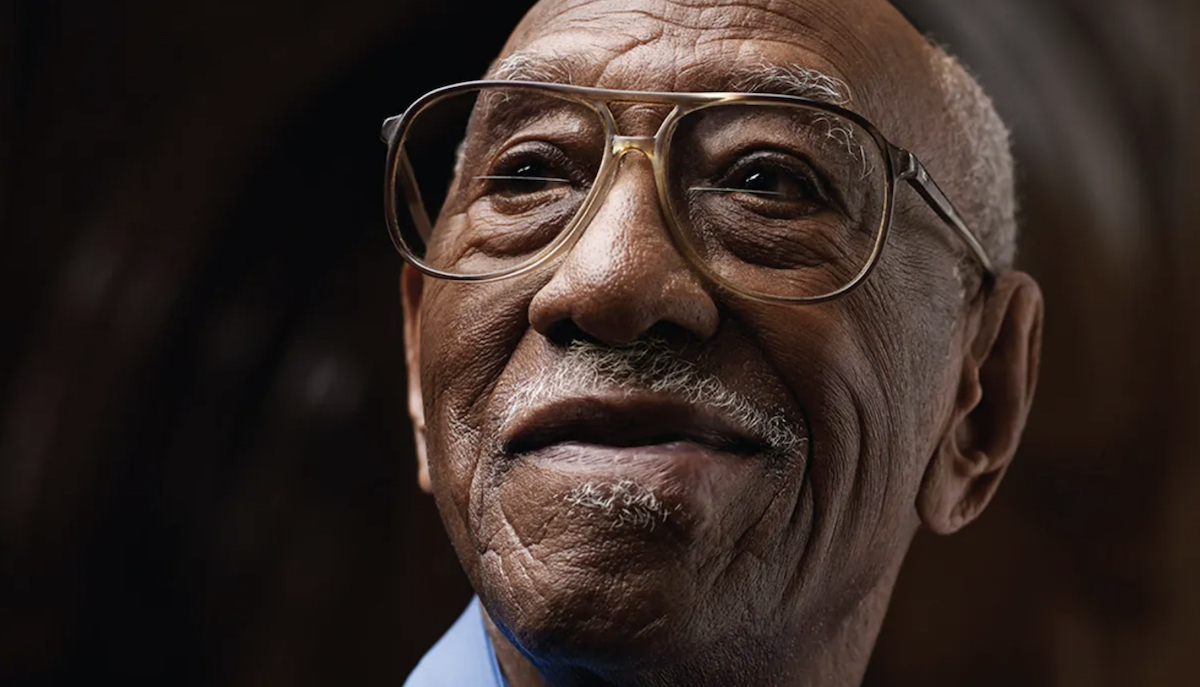

December 7, 1918 – October 13, 2021
ASALH mourns the passing of historian and civil rights activist Timuel Black. In his 102 years of life, he stood as a witness to so many of the important people and events that have come to define and shape the experiences of African Americans in this country. As a child, he lived with and shared stories of his grandmother who was once held as a slave in Alabama. He lived through both the Spanish Influenza pandemic of 1918 and grew up on Chicago’s South Side Black community in the aftermath of the 1919 “Red Summer” riot.
Black served in the Army during World War II, where he faced discrimination in the ranks yet earned four bronze battle stars. He served with hundreds of other African American truck drivers in the “Red Ball Express”– the famed truck convoy system that supplied Allied forces moving quickly through Europe after breaking out from the D-Day beaches in Normandy in 1944. He fought in the Battle of the Bulge. He also visited the Buchenwald concentration camp in Germany after it was liberated.
He was a fierce labor organizer and served as the president of the Chicago chapter of the Negro American Labor Council, founded by labor leader A. Philip Randolph. In 1963 Martin Luther King tapped Black to mobilize thousands of Chicagoans to go to the nation’s capital via charter buses and entire railroad trains for the March on Washington for Jobs and Freedom. When King came to Chicago in the 1966 during the Chicago Freedom Movement–a civil rights campaign that helped provoke the Fair Housing Act of 1968, Black united with the leaders of this influential and dangerous campaign by marching through the streets, picketing real estate agents who were guilty of redlining and standing tall in the face of danger. Black witnessed the uprising against racial injustice and police brutality. He said he saw a direct line from the civil rights movement to the Black Lives Matter Movement. “Though the struggle goes on, I am encouraged by younger generations, in particular, across races and gender,” Black argued, “They’re fighting to make things better economically, socially, politically for everyone, not just for themselves.”
As a political activist, he was one of the key individuals who help get his Roosevelt University classmate, Harold Washington, elected as the first African American mayor of Chicago. He helped organize the effort to get, former Ambassador and Senator, Carol Mosley Braun, elected as the first Black woman elected to the United States Senator. More recently, he mentored a young Barack Obama and helped bring the Obama Presidential Center to the South Side of Chicago.
Black was also a stalwart supporter ASALH and, as an educator, much of his work supported the Association’s and Dr. Woodson’s mission to promote, research, preserve, interpret and disseminate information about Black life, history and culture to the global community . Black was first exposed to ASALH in elementary school in 1926 when his father took him to a Wabash YMCA–where ASALH was founded, to witness historian Carter G. Woodson introduce the first Negro History Week which evolved over the decades into Black History Month. As an adult, he was a longtime member of the Chicago Branch; was a frequent attendee at national meetings well into his 90s; and was always willing to mentor and speak to anyone with an interest in the history of African Americans. His career as a teacher included work in the Chicago City Colleges and high schools on the South Side of Chicago. His writings include Bridges of Memory: Chicago’s First Wave of Great Migration (2003), Bridges of Memory: Chicago’s Second Generation of Great Migration (2007), and Sacred Grounds: The Chicago Streets of Timuel Black as Told to Susan Klonsky (2019).
With his passing, both ASALH and Chicago have lost giant in the profession whose influence and presence will be surely missed. His work ethic and activism is something that we should all aspire. Timuel Black always ended interviews saying “I hope I said something useful.” For all of us who knew him, talked with him, and learned from him we can confidently say, “Yes sir. You certainly did.” For that, we sincerely thank you!
